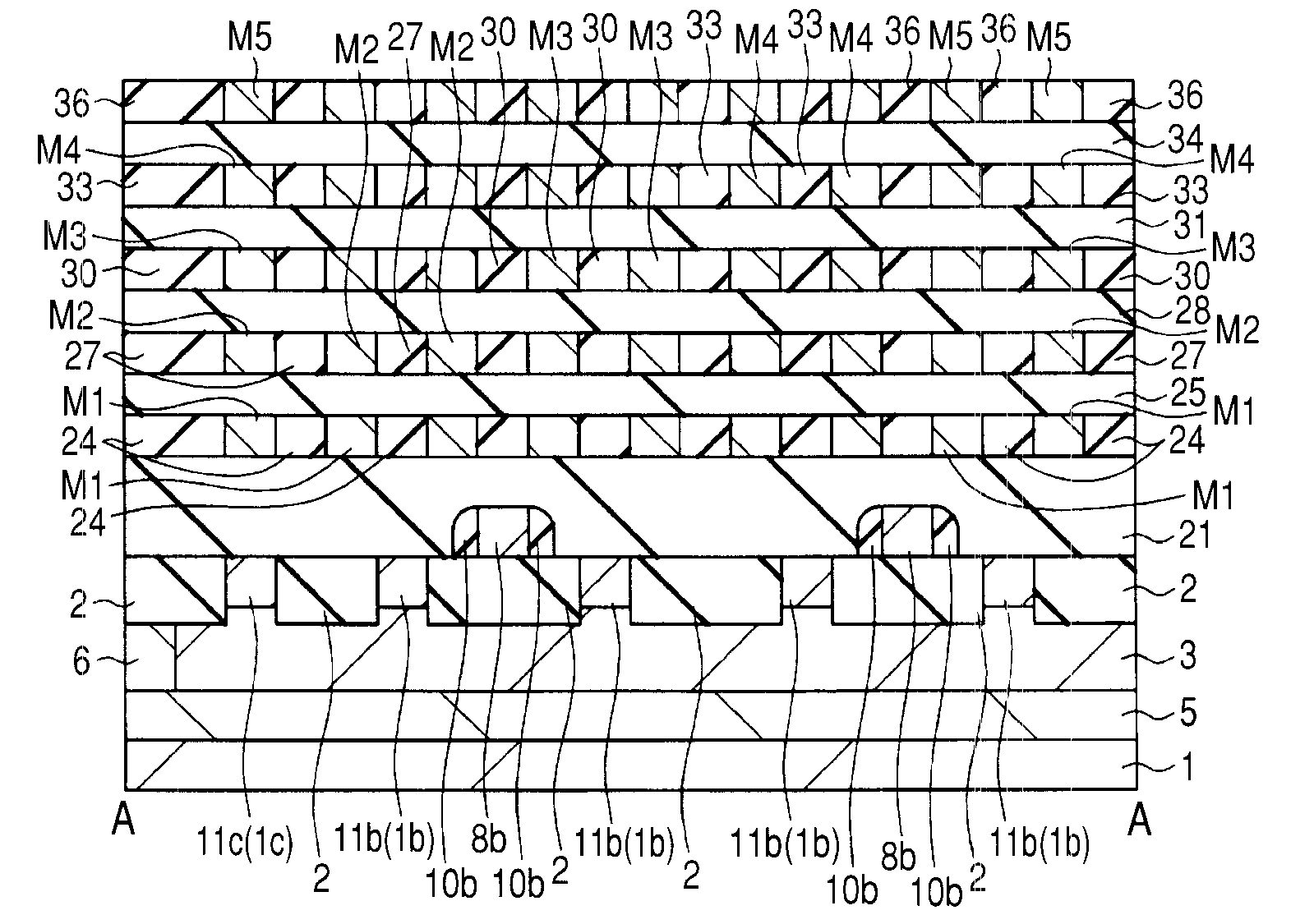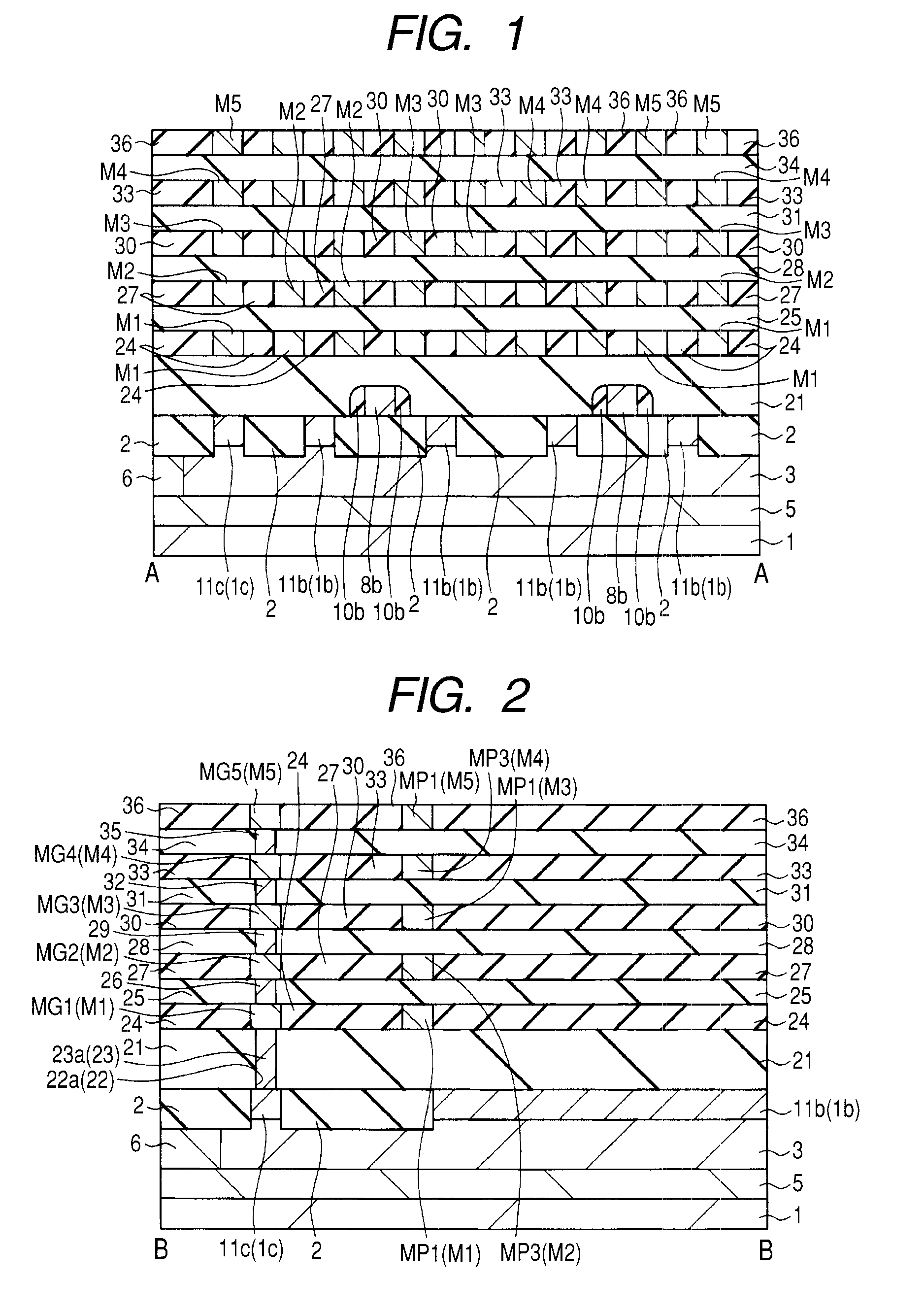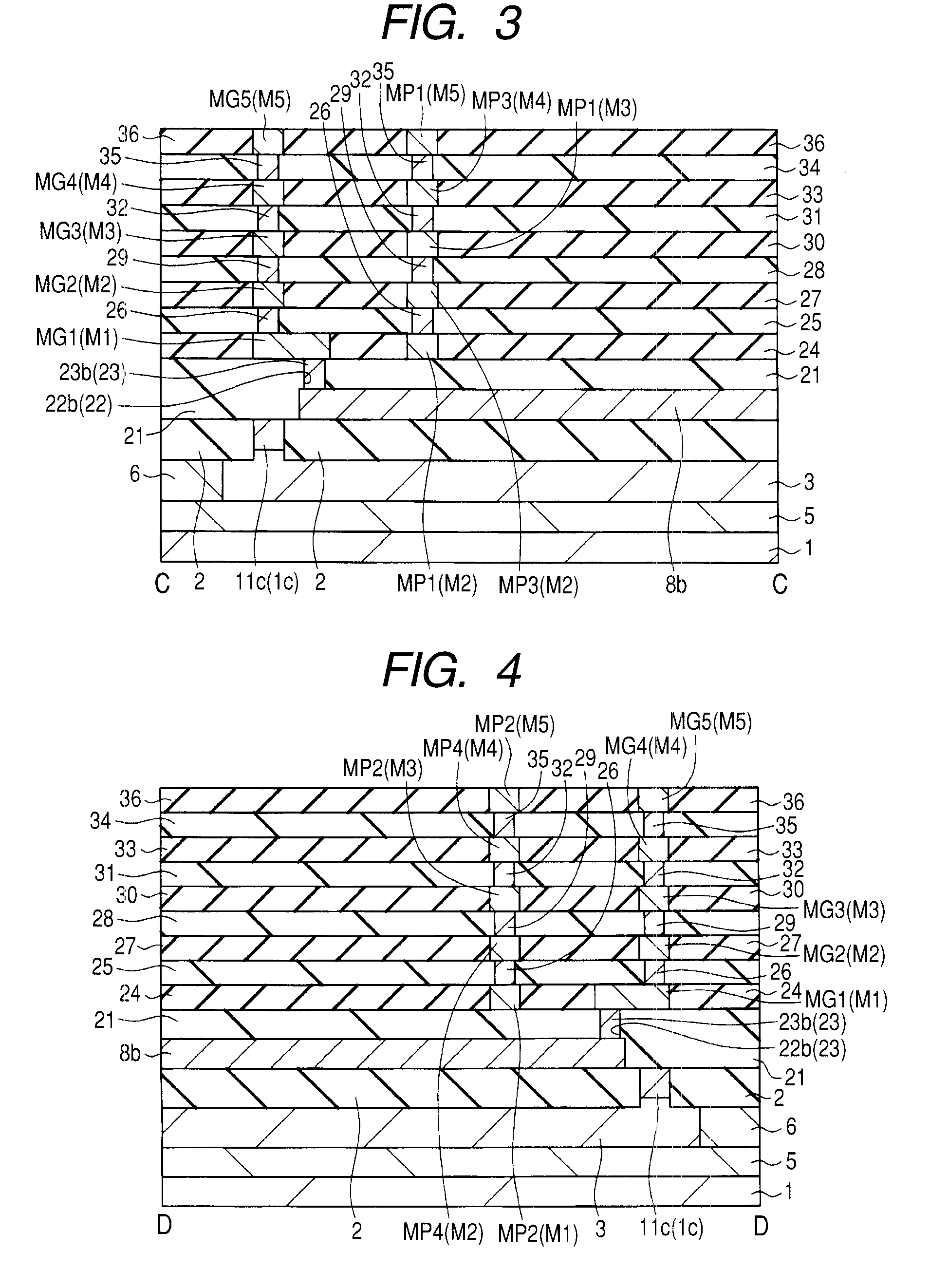Semiconductor device
a technology of semiconductor devices and capacitors, applied in the direction of semiconductor/solid-state device details, diodes, capacitors, etc., can solve the problems of parasitic capacitance, degrade and the electrical characteristic of a circuit using the capacitance element to become unstable, so as to improve the performance of a semiconductor device
- Summary
- Abstract
- Description
- Claims
- Application Information
AI Technical Summary
Benefits of technology
Problems solved by technology
Method used
Image
Examples
first embodiment
[0058]A semiconductor device of the present embodiment will be described with reference to the drawings. The semiconductor device of the present embodiment is the one having a capacitance element.
[0059]FIG. 1 to FIG. 7 are cross-sectional views of substantial parts in the semiconductor device of the present embodiment, FIG. 8 to FIG. 18 are plan views of substantial parts in the semiconductor device of the present embodiment. Each of FIG. 1 to FIG. 6 and FIG. 8 to FIG. 18 shows a cross-sectional view or a plan view of a capacitor formation region of the semiconductor device, and FIG. 7 shows a cross-sectional view of a MISFET formation region of the semiconductor device. FIG. 1 corresponds to a cross-section at an A-A line in FIG. 8 or FIG. 9, FIG. 2 corresponds to a cross-section at a B-B line in FIG. 8 or FIG. 9, FIG. 3 corresponds to a cross-section at a C-C line in FIG. 8 or FIG. 9, FIG. 4 corresponds to a cross-section at a D-D line in FIG. 8 or FIG. 9, FIG. 5 corresponds to a ...
second embodiment
[0173]FIG. 31 and FIG. 32 are plan views of substantial parts of the semiconductor device in the present embodiment and correspond to FIG. 15 and FIG. 14 of the above first embodiment, respectively. Note that FIG. 32 is a plan view but provides hatching to the conductor pattern 8b, the p-type semiconductor regions 11b, 11c (active regions 1b, 1c), and the wiring M1 for making the drawings easily to be viewed as in FIG. 14 of the first embodiment.
[0174]Each of the conductor patterns 8b disposed below the capacitance element C1 needs to be electrically coupled to the metal pattern MG1. For this purpose, in the capacitor formation region, each of the conductor patterns 8b needs to cross in a planar manner at least one of the wiring part MC1 in the metal pattern MP1 and the wiring part MC2 in the metal pattern MP2, and to extend in the X direction for being electrically coupled to the metal pattern MG1 via the plug 23b embedded in the contact hole 22b formed in the insulating film 21.
[0...
third embodiment
[0180]FIG. 33 and FIG. 34 are plan views of substantial parts in the semiconductor device of the present embodiment, and correspond to FIG. 31 and FIG. 32 of the above second embodiment, respectively. Note that FIG. 34 is a plan view but provides hatching to the conductor pattern 8b, the p-type semiconductor regions 11b, 11c (active regions 1b, 1c), and the wiring M1 for making the drawings easily to be viewed as in FIG. 14 of the first embodiment and FIG. 32 of the second embodiment.
[0181]Also in the present embodiment, as in the second embodiment, each of the conductor patterns 8b in the capacitor formation region extends in the x direction and is disposed to overlap one of the wiring part MC1 in the metal pattern MP1 and the wiring part MC2 in the metal pattern MP2 in a planar manner, but not to overlap the other one in a planar manner. Then, also in the present embodiment, as in the second embodiment, each of the conductor patterns 8b couples one end thereof, which crosses over ...
PUM
 Login to View More
Login to View More Abstract
Description
Claims
Application Information
 Login to View More
Login to View More - R&D
- Intellectual Property
- Life Sciences
- Materials
- Tech Scout
- Unparalleled Data Quality
- Higher Quality Content
- 60% Fewer Hallucinations
Browse by: Latest US Patents, China's latest patents, Technical Efficacy Thesaurus, Application Domain, Technology Topic, Popular Technical Reports.
© 2025 PatSnap. All rights reserved.Legal|Privacy policy|Modern Slavery Act Transparency Statement|Sitemap|About US| Contact US: help@patsnap.com



